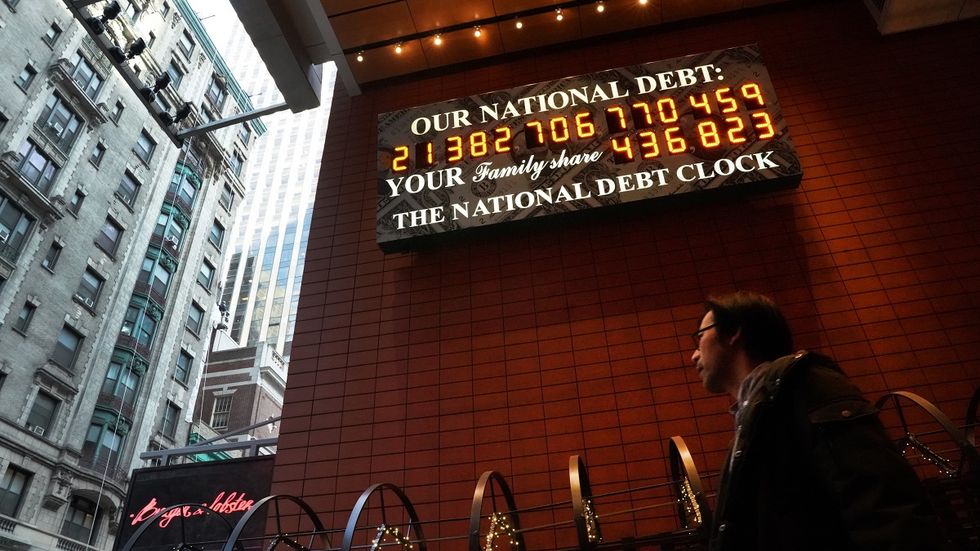
© 2024 Blaze Media LLC. All rights reserved.
The national debt is now 110 percent of the USA's GDP — the largest ratio since World War II
August 29, 2019
The U.S. national debt has now reached 110 percent of the country's gross domestic product.
What is the national debt?
The U.S. national debt is created by each year's federal budget deficit, or how much the federal government spends beyond what it takes in, and interest on the debt itself.
The federal deficit has been skyrocketing year over year during the Trump administration. According to data published by the White House's Office of Management and Budget (OMB), the federal deficit passed $1 trillion between 2009 and 2012 as the government employed anti-recession measures. By 2013 it had dropped to $678 billion, then fell even further the following year to $484 billion. The last year that the federal government ran a surplus was in 2001.
- 2013: $678 billion
- 2014: $484 billion
- 2015: $442 billion
- 2016: $585 billion
- 2017: $665 billion
- 2018: $779 billion
The OMB expects this deficit to pass the $1 trillion mark during this fiscal year and remain there until at least 2022.
- 2019: $1.092 trillion (estimate)
- 2020: $1.101 trillion (estimate)
- 2021: $1.068 trillion (estimate)
- 2022: $1.049 trillion (estimate)
The Congressional Budget Office has slightly more modest estimates, predicting in its August report that the deficit will hit $960 billion by the end of the 2019 fiscal year on Sept. 30, then average "$1.2 trillion between 2020 and 2029."
What happened now?
Thanks to the deficit, the national debt has now reached 110 percent of the GDP. CBS News White House correspondent Mark Knoller noted that this is the "Largest Debt to GDP ratio since 118.9% at the end of WWII," a number confirmed by the Congressional Research Service.
The national debt currently sits at $22.5 trillion. At the end of 2008 when former President Barack Obama was first elected, the national debt sat at $10 trillion. In 2016 when Trump was elected to succeed Obama, it was $19.6 trillion.
The U.S. GDP for the second quarter of this fiscal year was revised down to a 2 percent increase, down from 3.1 percent the previous quarter.
During his campaign, Trump promised to do away with the debt
In March 2016, then-candidate Donald Trump told the Washington Post that he would eliminate the entire national debt "over a period of eight years" (assuming a two-term presidency). He said that he would be able to do that by "renegotiating all of our [foreign trade] deals."
The following month he told Fortune that he could pay off "a percentage" of the debt, but that he would "rather not be so aggressive" in getting rid of it because "we have to rebuild the infrastructure of our country." He stressed, though, that "we have to reduce our debt."
#mc_embed_signup{background:#fff; clear:left; font:14px}
/* Add your own MailChimp form style overrides in your site stylesheet or in this style block.
We recommend moving this block and the preceding CSS link to the HEAD of your HTML file. */
Want to leave a tip?
We answer to you. Help keep our content free of advertisers and big tech censorship by leaving a tip today.
Want to join the conversation?
Already a subscriber?
more stories
Sign up for the Blaze newsletter
By signing up, you agree to our Privacy Policy and Terms of Use, and agree to receive content that may sometimes include advertisements. You may opt out at any time.
© 2024 Blaze Media LLC. All rights reserved.
Get the stories that matter most delivered directly to your inbox.
By signing up, you agree to our Privacy Policy and Terms of Use, and agree to receive content that may sometimes include advertisements. You may opt out at any time.